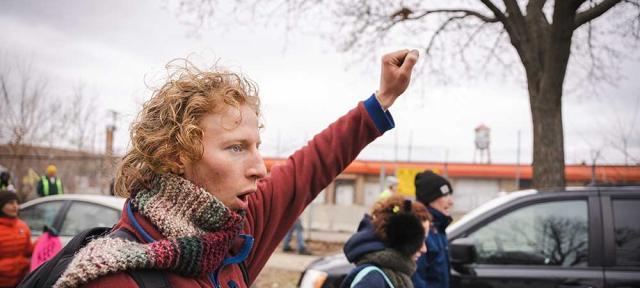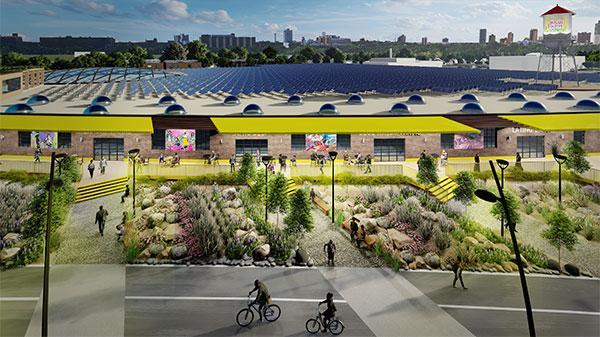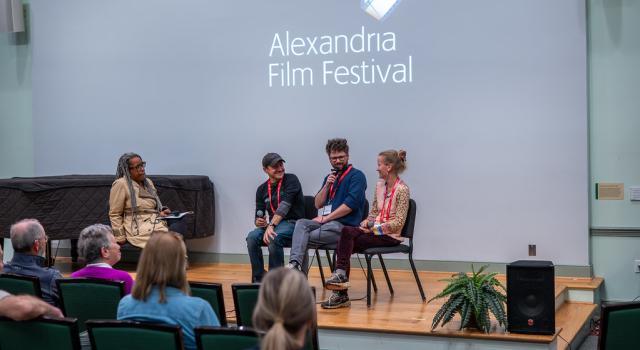A Recent Graduate Turns Their Attention to Environmental Justice through Urban Farming and Affordable Housing

Alum Daniel Colten Schmidt 18F advocates for sustainable solutions to inequity in his adopted home community.
I’ve never been one to follow conventional lines of thinking. I prefer to ask questions that interest me, no matter where the inquiry leads. At Hampshire, I studied philosophy with a focus on the history of Western social-political economic thought, as well as a bit of chemistry. In my first two years, I expressed myself through creative writing, and in my final two years, I turned to photography as an expressive mode.
After I graduated, my partner (another Hampshire grad, Luke Gannon 17F) and I moved to Minneapolis, on a whim. And we moved to the East Phillips neighborhood because the rent was cheap. It’s the lowest-income and highest-diversity neighborhood in the city, with a dense population of urban Indigenous people. Residents have survived industrial pollution and environmental racism for well over a century. When we arrived, in the summer of 2022, tensions over environmental justice concerns were rapidly increasing with the city’s proposed demolition of a warehouse that was built atop arsenic-contaminated soil. We quickly became aware of the East Phillips Neighborhood Institute (EPNI) and, that fall, got involved as volunteers and activists.
At first, I was going to protests every week or so, and then I began volunteering for the communications team, where I wrote op-eds for local papers. I was overcome with anger that this neighborhood would knowingly be polluted because its residents are poor and largely BIPOC. I was employed at that time with the city’s health department and moonlighted as an activist. More than once, I was reprimanded by the city for actively working against its policies. Through my research and writing, I was invited to join negotiations with state legislators to appropriate $12.2 million to the East Phillips Neighborhood Institute for the purpose of buying the warehouse from the city.
Hampshire allowed me to follow that golden thread we often call inspiration, and that made all the difference.
After my work at the state legislature, I was asked to serve as the first funding development manager for EPNI, handling fundraising campaigns, seeking and negotiating with investors, writing grant applications for foundations and government programs, and developing the community ownership model. Since May of this year, we’ve raised almost $1,000,000, and three legal firms have donated pro bono time to help set up this unprecedented ownership model.
Through Indigenous socioeconomic philosophy, we are boldly experimenting with solutions for the climate and inequity problems of the 21st century. The vision is to convert the warehouse in question to an indoor aquaponics-hydroponics farm that will produce food year-round and 60 units of low-cost housing with solar panels on the roof that would power 500 East Phillips homes. Most important, EPNI is developing a community ownership model that will enable residents of the low-income neighborhood to benefit directly from this project, and to prevent gentrification.
Some questions that drive our work are: How do we build an economically viable institution that is fundamentally sustainable and equitable? How do we institutionalize a grassroots movement without losing community power? And how can communities take power back from exploitative colonizers without resorting to violence?
Hampshire allowed me to follow that golden thread we often call inspiration, and that made all the difference. I’m keenly aware that my studies in chemistry gave me the foundation and confidence to read reports on contaminants of concern in the East Phillips neighborhood, and my studies in political economy prepared me to help develop the community ownership model. My education at Hampshire was a perfect prelude to my work at EPNI.
But more than anything, Hampshire prepared me to excel in moments of unpredictability, to become excited when new challenges arise, to ask questions that others haven’t yet considered, and to work as a team player.




